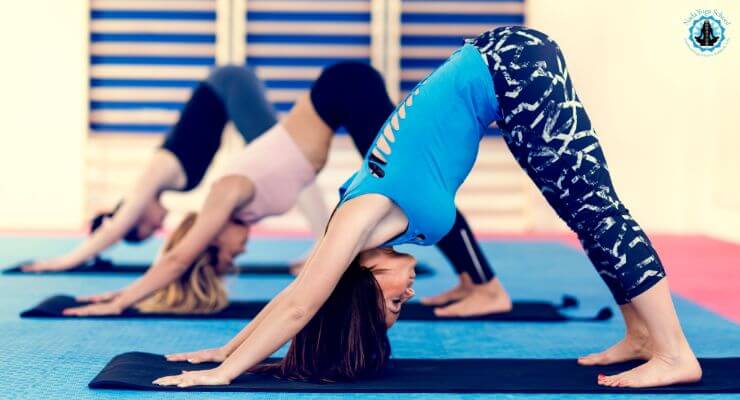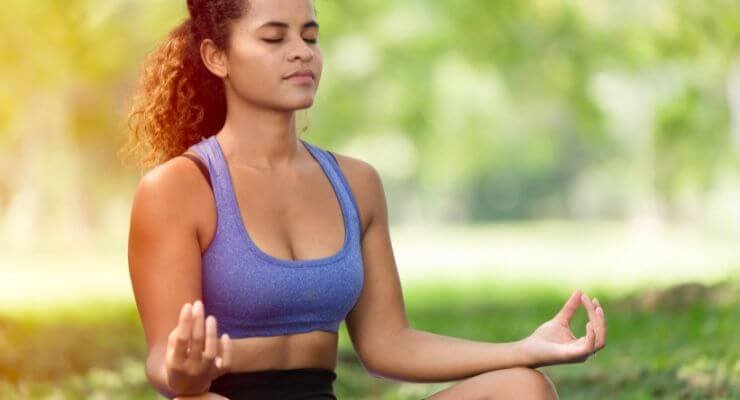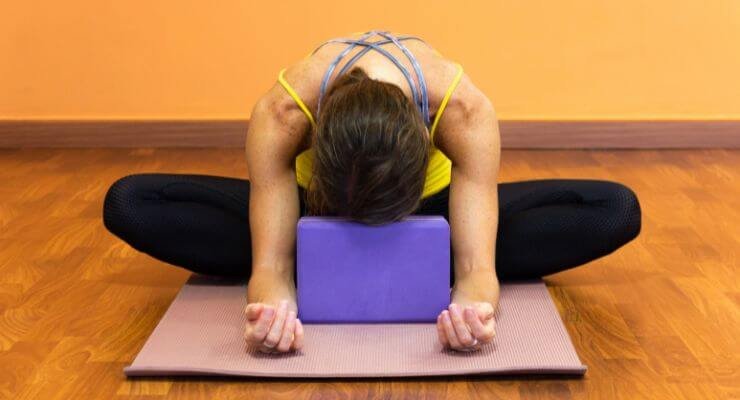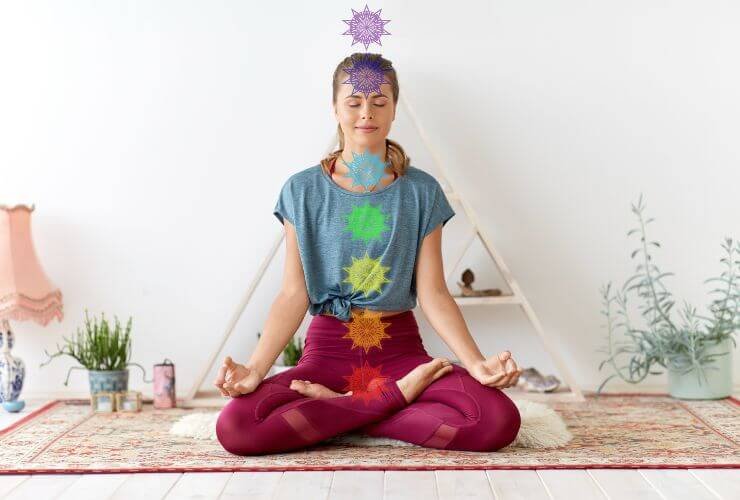Power yoga is a fitness-based approach to yoga that focuses on building strength and endurance. It is a highly dynamic and vigorous form of yoga that challenges the body and mind.
Unlike traditional forms of yoga, power yoga moves at a much faster pace. The practice is designed to increase heart rate, build strength, and improve flexibility. Power yoga is a great way to get a full-body workout while also improving mental focus and concentration. The practice is also known to help reduce stress and anxiety, making it a popular choice for those looking to improve their overall well-being.
Understanding Power Yoga
Power yoga is a modern form of yoga that combines traditional yoga poses with a high-intensity workout. It is often referred to as “gym yoga” due to its focus on physical fitness and strength-building. Unlike traditional yoga, power yoga is not focused on meditation or relaxation, but rather on building strength and endurance.
Power Yoga is a hybrid form of yoga that was developed out of Ashtanga yoga, a style of yoga popularized in the 80s. It is a fast-paced, cardiovascular workout that is designed to build strength and flexibility in the body through high-impact yoga postures. Power yoga classes typically include a series of flowing movements that are synchronized with the breath, and can include a variety of different poses, such as standing poses, forward bends, backbends, and inversions.
One of the key features of power yoga is its emphasis on building strength and endurance. Unlike traditional yoga, which focuses on flexibility and balance, power yoga is designed to challenge the body and build muscle mass. It is often used as a form of cross-training for athletes, as it can help to improve overall fitness and performance.
Another important aspect of power yoga is its emphasis on breath control. Power yoga practitioners are encouraged to use deep, rhythmic breathing to help them stay focused and energized throughout their practice. This can help to improve lung capacity, reduce stress, and promote overall well-being.
Overall, power yoga is a challenging and intense form of yoga that is designed to build strength, endurance, and flexibility. It is a great choice for anyone looking to improve their physical fitness and overall well-being.
Origins of Power Yoga
Power Yoga is a modern style of yoga that originated in the United States in the mid-1990s. The term “Power Yoga” was coined by Beryl Bender Birch, who is considered the founder of the style. Birch was a student of Ashtanga Yoga, which was developed by K. Pattabhi Jois in India in the 20th century.
Power Yoga is said to have been developed as a response to the increasing popularity of aerobic exercise in the 1980s and 1990s. The style is characterized by a focus on strength, flexibility, and balance, and is often performed in a heated room to promote sweating and detoxification.
Although Power Yoga is often associated with Ashtanga Yoga, it is actually a distinct style that draws on a variety of yoga traditions. Some of the key influences on Power Yoga include:
- Ashtanga Yoga: Power Yoga borrows many of its poses and sequencing from Ashtanga Yoga, which emphasizes flowing movements and breath control.
- Iyengar Yoga: Power Yoga also draws on the alignment-focused approach of Iyengar Yoga, which uses props to help students achieve correct postures.
- Vinyasa Yoga: Power Yoga is often described as a form of Vinyasa Yoga, which emphasizes flowing movements that are synchronized with the breath.
One of the key features of Power Yoga is its adaptability. Unlike more traditional styles of yoga, Power Yoga does not adhere to a strict set of poses or sequences. Instead, instructors are encouraged to develop their own unique approaches that reflect their own experiences and training. This flexibility has helped to make Power Yoga one of the most popular styles of yoga in the world today.
Characteristics of Power Yoga
Power yoga is a dynamic and intense form of yoga that is designed to increase strength, endurance, and flexibility. It is a popular form of yoga that has gained popularity in recent years due to its challenging nature and ability to provide a full-body workout. The following are some of the key characteristics of power yoga:
The focus on strength, endurance, and flexibility
One of the primary characteristics of power yoga is its focus on building strength, endurance, and flexibility. It incorporates a range of poses and movements that are designed to challenge the body and build muscular strength. These poses are often held for longer periods of time than in other forms of yoga, which helps to build endurance and increase flexibility.
Incorporating dynamic sequences and flowing movements
Power yoga is characterized by its dynamic sequences and flowing movements. Unlike other forms of yoga that focus on holding poses for long periods of time, it involves a series of movements that are linked together in a flowing sequence. This helps to build cardiovascular endurance and improve overall fitness.
Variations in intensity and approach
Another key characteristic of power yoga is its variations in intensity and approach. Power yoga classes can range from gentle and meditative to intense and challenging. Some classes may focus more on strength-building poses, while others may incorporate more flowing movements. This makes it a versatile form of exercise that can be tailored to meet the needs of different individuals.
In summary, power yoga is a dynamic and intense form of yoga that is designed to increase strength, endurance, and flexibility. It incorporates dynamic sequences and flowing movements, and can be tailored to meet the needs of different individuals.
Benefits of Power Yoga
Power yoga is a form of yoga that has gained popularity in recent years due to its numerous benefits. The practice of power yoga involves a series of dynamic movements and poses that are designed to build strength, flexibility, and balance. Here are some of the benefits of practicing power yoga:
Physical Benefits
Power yoga is an excellent way to improve physical fitness. The practice involves a series of challenging poses that require strength, flexibility, and balance. Regular practice can help build muscle, increase flexibility, and improve overall physical fitness. Power yoga can also help improve posture and reduce the risk of injury.
Mental and Emotional Well-being
In addition to physical benefits, power yoga can also have a positive impact on mental and emotional well-being. The practice of power yoga involves controlled breathing, which can help calm the mind and reduce stress. Regular practice can also help improve focus and concentration, which can be beneficial for those who struggle with anxiety or depression.
Stress Reduction and Increased Vitality
Power yoga can also be an effective way to reduce stress and increase vitality. The practice involves a series of dynamic movements and poses that can help increase blood flow and oxygenation throughout the body. This can help reduce stress and increase energy levels. Power yoga can also be a great way to improve overall well-being and promote a sense of vitality and vitality.
Overall, power yoga is an excellent way to improve physical fitness, mental and emotional well-being, and reduce stress. With regular practice, power yoga can help individuals achieve a greater sense of balance, strength, and vitality.
The Science Behind Power Yoga
How Power Yoga Affects the Body and Mind
Power yoga is a form of yoga that combines strength and flexibility training with a focus on breath control and mindfulness. The practice involves a series of dynamic poses that are performed in a flowing sequence, with each pose linked to the breath. The movements are designed to build strength, increase flexibility, and improve balance and coordination.
One of the key benefits of power yoga is that it can help to reduce stress and anxiety. This is because the practice promotes the release of endorphins, which are natural mood-boosters. Additionally, the focus on breath control can help to calm the mind and reduce feelings of tension and anxiety.
The Role of Breath Control and Increased Heart Rate
Power yoga also has a cardiovascular component, as the practice involves a series of movements that increase heart rate and promote circulation. This can help to improve overall cardiovascular health and reduce the risk of heart disease and other chronic conditions.
Breath control is a key component of power yoga, as it helps to regulate the body’s response to stress and promotes relaxation. By learning to control the breath, practitioners can improve their ability to manage stress and anxiety, both on and off the mat.
Research on the Health Benefits of Power Yoga
Research has shown that power yoga can have a number of health benefits, including improved strength, flexibility, and balance, as well as reduced stress and anxiety. A study published in the International Journal of Yoga found that practicing power yoga for eight weeks led to significant improvements in strength, flexibility, and balance, as well as reductions in stress and anxiety.
Another study published in the Journal of Alternative and Complementary Medicine found that practicing power yoga can improve overall cardiovascular health, including reducing blood pressure and improving cholesterol levels.
Overall, power yoga is a dynamic and challenging form of yoga that can provide a range of physical and mental health benefits. By combining strength and flexibility training with breath control and mindfulness, power yoga can help to improve overall health and well-being.
Key Elements of Power Yoga
Power yoga is a dynamic form of yoga that combines physical exercise with mental focus. It is a fast-paced, intense workout that emphasizes strength, flexibility, and endurance. There are several key elements that make power yoga unique from other forms of yoga.
Breathing Techniques
One of the most important elements of power yoga is the use of breathing techniques. In power yoga, the breath is used to link movement with intention. Practitioners use a specific type of breathing called ujjayi breath, which involves inhaling and exhaling through the nose with a slight constriction in the back of the throat. This creates a sound that is often described as oceanic or victorious breath. The use of ujjayi breath helps to calm the mind, increase focus, and build internal heat.
Postures
Another key element of power yoga is the use of specific postures, or asanas. Power yoga is a vinyasa-style yoga, which means that practitioners move through a sequence of postures in a flowing, continuous manner. The postures used in power yoga are designed to build strength, flexibility, and balance. Some of the most common postures used in power yoga include downward-facing dog, warrior series, and sun salutations.
Flow of Movement
The flow of movement is also an essential element of power yoga. In power yoga, practitioners move through postures in a continuous, fluid manner, linking breath with movement. This creates a sense of rhythm and flow that helps to build strength, endurance, and focus. The flow of movement in power yoga is designed to be challenging, but also accessible to practitioners of all levels.
Overall, power yoga is a challenging and dynamic form of yoga that emphasizes strength, flexibility, and endurance. By incorporating breathing techniques, specific postures, and a flowing movement, power yoga helps practitioners to build physical and mental resilience.
How to Start Power Yoga
Power yoga is a physically demanding practice that can be challenging for beginners. However, with the right preparation, anyone can start practicing power yoga. In this section, we will discuss how to start power yoga, including choosing a class and essential gear.
Choosing a Class
When choosing a power yoga class, it is important to consider your experience level. If you are new to yoga, you may want to start with a beginner’s class to learn the basic poses and breathing techniques. Once you have mastered the basics, you can move on to more advanced classes.
It is also important to consider the style of power yoga when choosing a class. Power yoga has many different styles, each with its own unique characteristics. Some styles are more focused on strength and endurance, while others are more focused on flexibility and relaxation. Research different styles and find one that resonates with you.
Essential Gear
To practice power yoga, you will need some essential gear. Here are some items you may want to consider:
- Yoga mat: A good quality yoga mat will provide cushioning and support during your practice. Look for a mat that is thick and non-slip.
- Yoga clothes: Wear comfortable, breathable clothes that allow for a full range of motion. Avoid baggy clothes that may get in the way during your practice.
- Water bottle: Staying hydrated is important during any physical activity. Bring a water bottle to your class and drink water regularly throughout your practice.
- Towel: Power yoga can be a sweaty practice. Bring a towel to wipe away sweat and keep your mat dry.
In addition to these essentials, you may also want to consider props such as blocks and straps. These can be helpful in modifying poses and making them more accessible.
With the right preparation and gear, anyone can start practicing power yoga. Remember to listen to your body and take breaks as needed. With time and practice, you will build strength, flexibility, and endurance.
Difference Between Power Yoga vs. Other Yoga Styles
Power Yoga vs Vinyasa Yoga
Power yoga and Vinyasa yoga are often used interchangeably, but they are not the same. Vinyasa yoga is a type of yoga that links breath with movement, while power yoga is a more intense and physically demanding version of Vinyasa yoga. Power yoga moves at a faster pace and is designed to build strength, endurance, and flexibility. Vinyasa yoga, on the other hand, is more focused on the flow of movement and breathing.
Power Yoga vs Ashtanga Yoga
Power yoga and Ashtanga yoga share some similarities, but they are not the same. Ashtanga yoga is a set sequence of poses that are performed in the same order every time. Power yoga, on the other hand, is more flexible and allows for more creativity in sequencing. Power yoga also tends to move at a faster pace than Ashtanga yoga.
Power Yoga vs Hatha Yoga
Hatha yoga is a more traditional form of yoga that focuses on holding poses for longer periods of time and emphasizes breath control. Power yoga, on the other hand, moves at a faster pace and is designed to build strength and endurance. While both styles of yoga can be physically challenging, power yoga is more intense and can be a better choice for those looking for a more strenuous workout.
Identifying common elements and distinctions
All forms of yoga share some common elements, such as a focus on breath control, mindfulness, and physical movement. However, each style of yoga has its own unique characteristics and benefits. Power yoga, for example, is designed to build strength and endurance, while Hatha yoga is more focused on relaxation and stress relief.
Choosing the right yoga style for your goals
When choosing a style of yoga, it’s important to consider your goals and fitness level. If you’re looking for a more intense workout, power yoga may be the best choice. If you’re looking for stress relief and relaxation, Hatha yoga may be a better fit. It’s also important to remember that yoga is a personal practice, and what works for one person may not work for another. Experimenting with different styles of yoga can help you find the one that’s right for you.
Practicing Power Yoga at Home
Power yoga is a dynamic and challenging form of yoga that can help improve strength, flexibility, and overall fitness. While many practitioners prefer to attend classes at a studio, it is possible to practice power yoga at home with a few simple guidelines.
Creating an Energizing Practice Space
Having a dedicated space for your power yoga practice can help you get into the right mindset and focus on your movements. Ideally, you should choose a quiet, clutter-free area with plenty of natural light and good ventilation. You may also want to consider the following:
- Use a non-slip yoga mat to prevent injuries and ensure stability during poses.
- Play energizing music or use a guided practice video to help you stay motivated.
- Light candles or use essential oils to create a calming atmosphere.
Guidelines for a Safe and Effective Home Practice
Practicing power yoga at home can be a great way to improve your physical fitness, but it’s important to follow some basic guidelines to prevent injuries and ensure a safe and effective practice. Here are a few tips to keep in mind:
- Warm up properly before starting your practice to prevent muscle strains and other injuries.
- Focus on proper alignment and form during poses to maximize their benefits and avoid unnecessary strain on your joints.
- Avoid pushing yourself too hard or trying to perform advanced poses before you are ready.
- Listen to your body and modify poses as needed to accommodate any injuries or physical limitations.
Developing a Personalized Power Yoga Routine
One of the benefits of practicing power yoga at home is that you can develop a personalized routine that meets your individual needs and preferences. Here are a few tips to help you create a routine that works for you:
- Start with a few basic poses and gradually add more challenging ones as you become more comfortable with the practice.
- Incorporate poses that target specific areas of the body, such as the core, legs, or arms.
- Mix up your routine with different types of poses, such as balancing poses, inversions, and backbends.
- Consider using a yoga app or online resource to help you design your routine and stay motivated.
By following these guidelines, you can create a safe, effective, and personalized power yoga practice at home. Whether you’re a beginner or an experienced yogi, practicing power yoga regularly can help improve your physical health, reduce stress, and boost your overall well-being.
Potential Risks and Precautions
While power yoga can be a great way to build strength, flexibility, and endurance, it’s important to be aware of the potential risks and take precautions to avoid injury.
Common Injuries
According to a Healthline, some common injuries associated with yoga, including power yoga, include:
- Wrist injuries
- Lower back pain
- Hamstring strains
- Shoulder injuries
- Neck pain
These injuries can occur if you push yourself too hard or don’t use proper form during poses. It’s important to listen to your body, start slowly, and work with a qualified instructor who can help you learn proper technique.
Precautions
To reduce the risk of injury during power yoga, consider the following precautions:
- Warm up before each session to prepare your muscles and joints for the workout.
- Wear comfortable, breathable clothing that allows for a full range of motion.
- Use a non-slip yoga mat to prevent slipping and sliding during poses.
- Stay hydrated by drinking plenty of water before, during, and after your workout.
- Modify poses as needed to accommodate your fitness level and any physical limitations you may have.
- Avoid pushing yourself too hard or comparing yourself to others in the class. Listen to your body and only do what feels comfortable and safe.
By taking these precautions and being mindful of your body’s limitations, you can safely enjoy the many benefits of power yoga.
Frequently Asked Questions
What are the benefits of practicing power yoga?
Practicing power yoga has numerous benefits, including increased flexibility, strength, and endurance. It can also improve cardiovascular health, reduce stress levels, and promote weight loss. It can also help to improve mental clarity and focus, as well as boost overall energy levels.
What are some power yoga poses for beginners?
There are several power yoga poses that are suitable for beginners, including downward-facing dog, warrior I and II, chair pose, and tree pose. These poses are designed to build strength and flexibility, and can be modified to suit individual needs and abilities.
How does power yoga differ from traditional yoga?
Power yoga is a more dynamic and physically demanding form of yoga than traditional yoga. Unlike traditional yoga, which focuses on static poses and meditation, it is designed to build strength and endurance through a series of flowing movements and poses. Power yoga also tends to be more fast-paced and intense than traditional yoga.
Is power yoga a good form of exercise for weight loss?
Yes, power yoga can be an effective form of exercise for weight loss. It helps to burn calories and build muscle, which can lead to increased metabolism and weight loss over time. However, it is important to combine it with a healthy diet and lifestyle to achieve optimal results.
Who is power yoga best suited for?
Power yoga is best suited for individuals who are looking for a challenging and dynamic form of exercise that can help to improve their overall health and fitness. It is also ideal for individuals who are looking to build strength, flexibility, and endurance, and who enjoy a more intense and physically demanding workout.
Where can I find power yoga classes near me?
Power yoga classes can be found at most yoga studios and fitness centers. Many gyms and community centers also offer power yoga classes. Additionally, there are many online resources and apps that offer virtual power yoga classes that can be done from the comfort of your own home.





